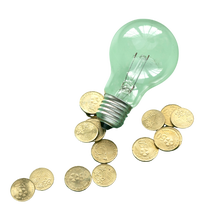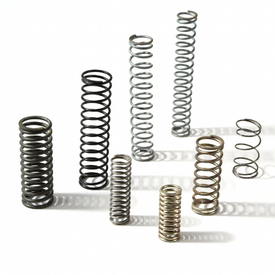Have you ever watched a spring in action? The way it compresses under pressure, storing energy, only to expand back to its original form when the pressure is released? There's something profound in this simple mechanical object that mirrors one of our most valuable human traits: resilience.
Resilience isn't just about bouncing back from life challenges. It's the everyday flexibility that allows us to respond to life's constant pressures without breaking. Much like a coiled spring, resilience is about absorbing impact, adapting to pressure, and returning to center—a perfect metaphor for understanding how we can manage our emotions.
The Physics of Emotional Self-Control

Compression Without Breaking
A well-designed spring has the perfect balance of flexibility and strength. When pressure is applied, it yields—but only to a point. This is exactly how emotional resilience works. When we feel the pressure of strong emotions or impulses, resilience allows us to bend without breaking.
This compression phase is critical to temperance. It's the moment when we acknowledge the pressure without immediately giving in to our reactive impulses. Just as a spring's value comes from its ability to compress without permanent deformation, our emotional resilience allows us to experience difficult feelings without being defined by our immediate reactions.
Storing Potential Energy
When compressed, a spring stores potential energy. Similarly, when we practice restraint in the face of emotional triggers, we're not suppressing energy—we're storing it for purposeful use. This is the essence of self-control: not the absence of emotion, but the channeling of emotional energy toward constructive ends.


Controlled Release and Return to Form
Perhaps the most beautiful quality of a spring is how it returns to its original form, releasing stored energy in a controlled way. This is where resilience truly shines as a metaphor for emotional regulation. The goal isn't to stay compressed forever—it's to release tension mindfully, returning to our centered state.
Building Your Spring-Like Resilience: A Temperance Toolbox
Calibrate Your Spring Tension
Just as springs are calibrated for specific applications, we can adjust our emotional responsiveness. Too rigid, and we might snap under pressure. Too loose, and we won't effectively manage our impulses.
Practical Takeaway: Identify one emotional trigger that consistently challenges your self-control. Practice gradually increasing your "compression capacity" through mindful exposure. Start with minor versions of this trigger, building tolerance before facing more significant challenges.
Create Compression Zones
Springs need physical space to compress. Similarly, we need psychological space between stimulus and response—what psychologists call the "pause."
Practical Takeaway: Design personal "compression zones"—physical or mental spaces that signal a pause. This might be taking three deep breaths, stepping outside for a moment, or mentally visualizing a spring compressing. Use these consistently when feeling emotional pressure.
Redirect the Release
The energy a spring releases can be channeled to perform useful work. Your emotional energy can be similarly redirected.
Practical Takeaway: Create a list of three constructive channels for emotional energy specific to your common triggers. For anger, this might include physical exercise, creative expression, or focused problem-solving. Practice consciously redirecting emotional energy toward these alternatives.
Maintenance and Recovery
Springs can lose elasticity over time if constantly compressed. Our emotional resilience also requires recovery periods and maintenance.
Practical Takeaway: Build regular recovery practices into your routine—activities that allow your emotional "spring" to fully extend and restore its elasticity. This might include nature time, play, meditation, or meaningful connection with others.
The Resilient Rhythm of Self-Control
The spring doesn't just teach us about handling individual emotional events—it reveals the natural rhythm of resilience. Compression, storage, release, and return create a continuous cycle that, when mastered, becomes the foundation of temperance and emotional wisdom.
By understanding ourselves as emotional springs, we gain a powerful framework for developing self-control. We recognize that the goal isn't to eliminate pressure or avoid compression, but to build a resilient system that can absorb, store, channel, and release emotional energy in ways that serve rather than sabotage our lives.
The next time you feel the pressure of a strong emotion or impulse, remember the humble spring. Feel the compression without fear of breaking. Recognize the potential in that stored energy. And trust in your ability to release it constructively, returning once again to your centered, resilient self.
Take the next step! Download the worksheet to apply what you've learned.


Add comment
Comments